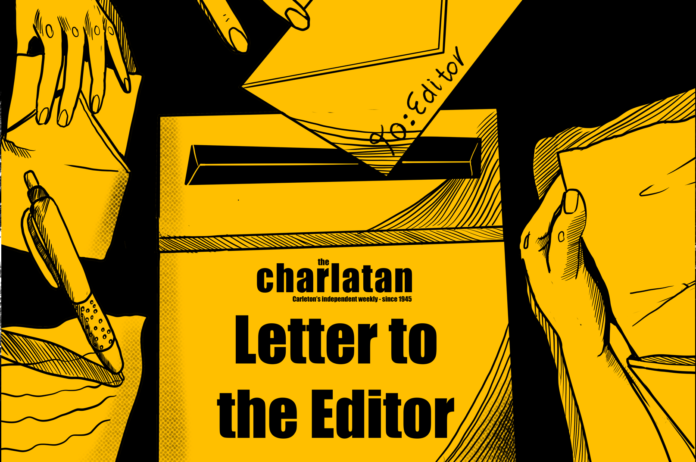The Charlatan recently published an editorial highlighting the need for post-secondary schools to aid in revitalizing Indigenous languages. However, in the service of promoting such an admirable objective, the Charlatan writes with a colonial mindset.
The first indicator of the Charlatan’s poor awareness of language revitalization is its characterization of Indigenous languages. The paper fails to observe the unique qualities of these languages as almost exclusively cultural.
Many would agree on top of the linguistic differences between French and the Algonquin language for example, the languages also play decidedly different cultural roles and are taught for different reasons. French is taught as both a cultural tool and a business tool, whereas for non-Indigenous students who likely make up the majority of the classrooms, Algonquin is almost certainly an exclusively cultural tool.
Carleton’s own student population is roughly 19 times larger than that of native Algonquin speakers. There is simply an inadequate number of speakers for it to be used as a social tool. A business is therefore unlikely to use Algonquin as its primary method of communication, leaving it a very niche, if not non-existent, economic purpose.
Some pundits and philistines may look down on that but there is beauty in preserving a language for such a purpose. However, this means classes like Carleton’s “French for Special or Professional Purposes” are likely not as useful economically should they be offered in Algonquin.
With this in mind, the Charlatan’s position that the university should “recognize [Indigenous languages] at the same level as French” is bizarre and seemingly against the wishes of the Indigenous community at Carleton. English is the university’s only official/working language, and thus any special status French may have at Carleton is informal. Regardless, efforts to teach Indigenous languages should be supported by best practices and nuanced teaching, rather than matching the number of courses offered to that of another language.
Kinàmàgawin, however, a report prepared by Indigenous leaders in collaboration with Carleton, asks for Algonquin to be made an official language. The editorial should have advocated for Algonquin to be made an official language in line with Kinàmàgawin, instead of equating the language to French.
The editorial also notes there are “more than 60 Indigenous languages in Canada,” but how many of those languages pertain to the specific unceded territory on which Carleton is situated? Cree and Mi’kmaq may be very important languages but the culture that surrounds them have very little to do with the land a student would familiarize themselves with on campus.
The value of learning an Indigenous language, particularly for non-Indigenous students, diminishes significantly if they cannot immerse themselves in the environment, and culture, in which the languages have historically thrived. This thinking is supported in Kinàmàgawin’s calls to action 18, requesting “an emphasis on the Algonquin language” and 19, highlighting “land-based practices are critical to the (re)production of Indigenous culture and identity.”
While the instruction of Indigenous languages can obviously include all the features of a standard language course, lecture halls and textbooks, the traditions within which Indigenous languages exist create distinct conditions for the full appreciation of their cultural significance.
Framing the learning process of these languages exclusively within Carleton’s Western colonial context gives insight not only into the decolonization that must occur at institutions across Canada, but also into the authorship that produced the editorial in question. Indigenous models of knowledge transfer must prevail over colonial ones in order for such language courses to be truly successful.
Featured image from file.






